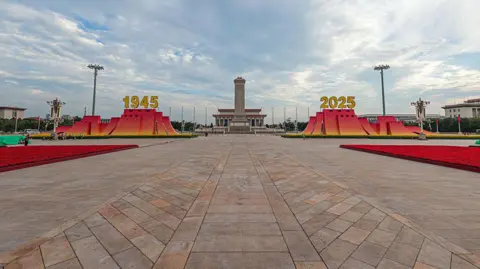In recent weeks, the natural wonder of Zhangjiajie National Park in Hunan Province, which inspired the world of the 2009 film "Avatar," has been overshadowed by an alarming amount of waste. Authorities in Cili County have initiated a major cleanup campaign as videos of the filthy caves circulated widely, revealing the stark contrast between the park's beauty and the shocking piles of trash.
The cleanup commenced earlier this month, with a reported 51 metric tons of waste removed from two caves by Wednesday. The issue of pollution in the park can be traced back to 2010, when villagers began dumping rubbish and pig waste into the caves after the county banned waste burning, according to the Xinhua news agency. It was not until recent years that local trash collection services could effectively address the growing problem, exacerbated by the extensive pig-farming industry in the area.
An environmental activist who shared some of the disturbing footage explained that the trash was stacked as high as seven to eight stories, staining the limestone walls of the caves so badly that he initially mistook the blackened material for coal. The activist, who preferred to remain anonymous for safety reasons, expressed his dismay at the extent of the situation.
Local officials have reported that approximately two-thirds of the 200 caves inspected were found to be contaminated; however, drinking water in the area remains safe. In response to the crisis, four officials have been suspended, and twelve livestock farms are under investigation for illegal wastewater discharge. This cleanup has faced significant hurdles due to the detection of toxic and flammable gases in the caves, leading to temporary halts in operations.
Environmental mismanagement issues are not new to China. In 2011, a chemical company infamously dumped thousands of metric tons of hazardous waste, leading to dire consequences for local ecosystems and communities. Moreover, similar pollution problems have plagued the Bijie city area, where both sewage and other waste have heavily contaminated several caves.
The Zhangjiajie cleanup initiative reflects an urgent need for authorities to balance environmental protection with public health and waste management in one of China's most beloved natural treasures.
The cleanup commenced earlier this month, with a reported 51 metric tons of waste removed from two caves by Wednesday. The issue of pollution in the park can be traced back to 2010, when villagers began dumping rubbish and pig waste into the caves after the county banned waste burning, according to the Xinhua news agency. It was not until recent years that local trash collection services could effectively address the growing problem, exacerbated by the extensive pig-farming industry in the area.
An environmental activist who shared some of the disturbing footage explained that the trash was stacked as high as seven to eight stories, staining the limestone walls of the caves so badly that he initially mistook the blackened material for coal. The activist, who preferred to remain anonymous for safety reasons, expressed his dismay at the extent of the situation.
Local officials have reported that approximately two-thirds of the 200 caves inspected were found to be contaminated; however, drinking water in the area remains safe. In response to the crisis, four officials have been suspended, and twelve livestock farms are under investigation for illegal wastewater discharge. This cleanup has faced significant hurdles due to the detection of toxic and flammable gases in the caves, leading to temporary halts in operations.
Environmental mismanagement issues are not new to China. In 2011, a chemical company infamously dumped thousands of metric tons of hazardous waste, leading to dire consequences for local ecosystems and communities. Moreover, similar pollution problems have plagued the Bijie city area, where both sewage and other waste have heavily contaminated several caves.
The Zhangjiajie cleanup initiative reflects an urgent need for authorities to balance environmental protection with public health and waste management in one of China's most beloved natural treasures.




















